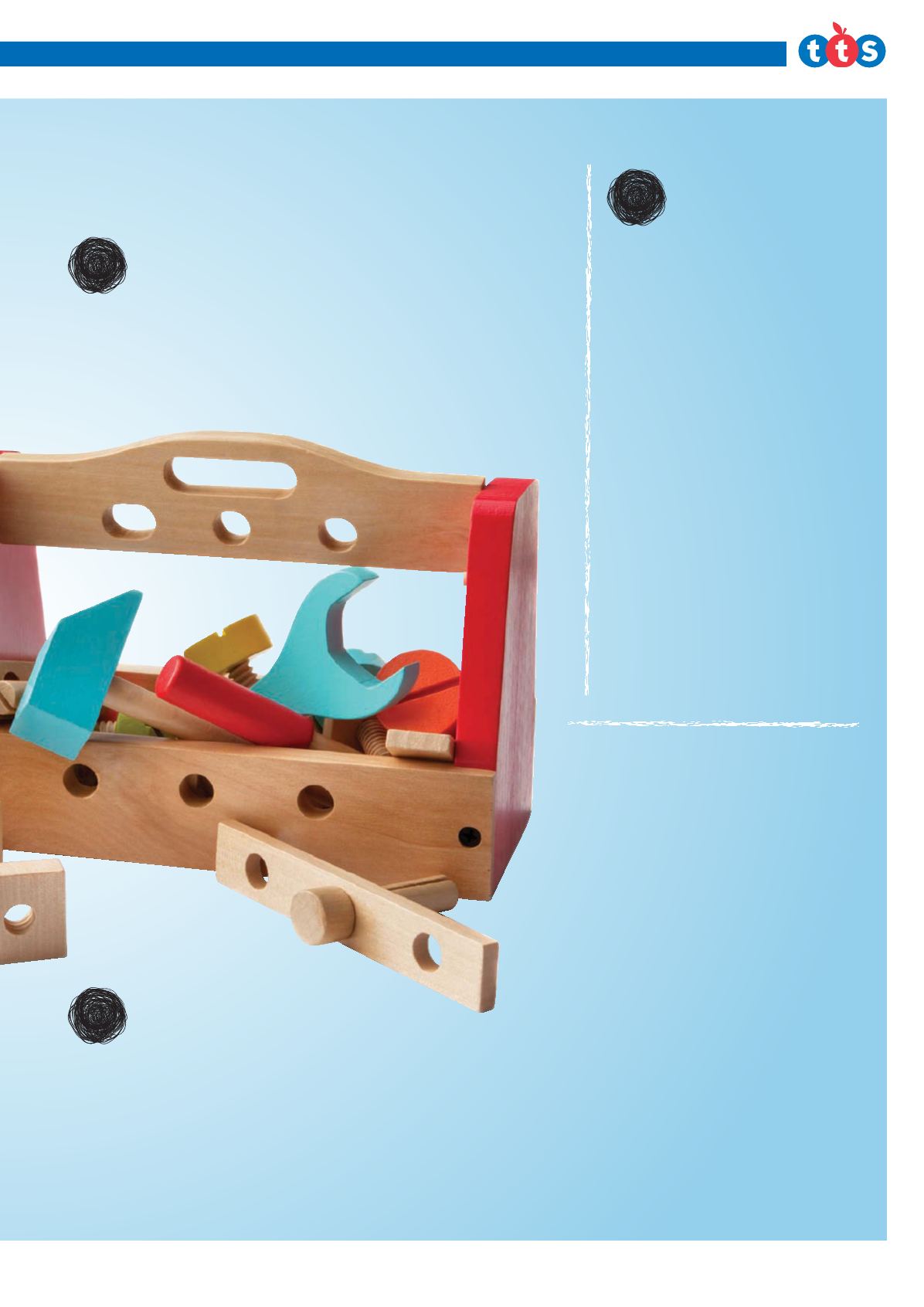
In association with
they do not securely understand the concept
of a simple sentence. Similarly, learners
cannot understand joining clauses tomake
complex/compound sentences if they do not
understand that a clause needs a verb and
that a simple sentence is a single clause.
Teachers need to focus on high quality
formative and diagnostic assessment to
identify misconceptions and probe their
Why would we make up examples, or use dry
exercises when there is such richness in the
books children are reading? For example,
who could resist JackieMorris’s tiny dragons
‘with whisper-thin wings of rainbow hues’
(
Tell me a Dragon
) when teaching expanded
TEACH READING & WRITING
67
Always use examples in context,
preferably froma real text
1
Usemulti-sensory
teaching approaches
Grammar is essentially a very abstract
concept for children to learn. The more
we can make this concrete, the easier the
concepts will be understood. At Babcock LDP
we have developed the idea of a sentence
toolkit where physical tools represent
grammatical concepts. This allows teacher
to use real (toy!) tools, images and actions
to support understanding. For example, we
use the image of an extending tape measure
to represent noun phrases; this allows the
teacher tomodel how a phrase/clause can
fill the noun slot in a sentence by extending
the measure, but also can model how the
noun phrase can be replaced with a single
noun or pronoun, by pressing the button
and shrinking the measure. Similarly, we
use the image of a screwdriver to represent
punctuation, to reinforce the fact that the
purpose of punctuation is to fix meaning for
the reader. This helps to reinforce the idea
that punctuation is about comprehension
not respiration!
2
3STRATEGIESFORSUCCESSFUL
GRAMMARTEACHING...
Secure key concepts
beforemoving on
3
pupils’ understanding. When children are
given opportunities to explore concepts and
explain their understanding, it becomes very
clear what further teaching is required. One
really useful example of this is an activity
I would use to clarify understanding about
sentences: provide your class with a range
of sentences (simple and complex), clauses
and phrases on cards and ask them to sort
them into ‘sentences’ and ‘non sentences’.
Challenge pupils to explain how they know.
From this, understanding about sentences,
verbs, punctuation, phrases and clauses can
be assessed.
There is no doubt that grammar teaching
can be exciting, empowering and creative
- provided we accept the challenge of
developing our own knowledge and skills.
Research evidence suggests that if we do,
we can expect to see gains not only in GaPS
understanding, but more importantly, in
children’s writing, enabling them to be more
aware of the choices and decisions they
make to communicate more effectively to
their reader.
Children need to see how grammatical
concepts are related to each other, building
one on another with secure foundations.
There are some key ideas secured early
in the curriculumwhich are essential to
understandmore complex concepts later.
For example, Y2 pupils will not be able to
learn the differences between questions,
exclamations, commands and statements if
noun phrases including prepositional
phrases (y3/4)? Teachers need to use the
quality texts they are using for literacy
teaching as models of the grammatical
concepts they need to teach. Examples
can be explored, replicated orally and
finally applied in children’s own writing.


